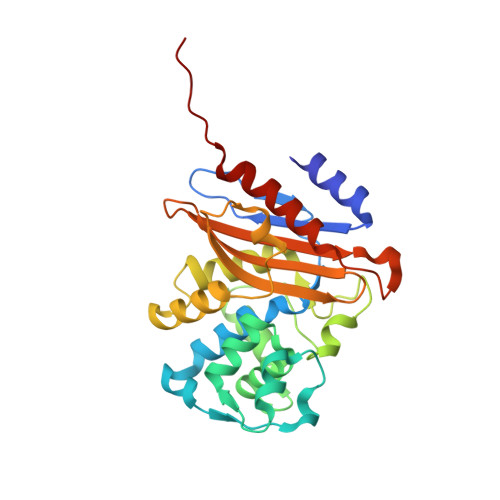Phosphate Promotes the Recovery of Mycobacterium tuberculosis beta-Lactamase from Clavulanic Acid Inhibition.
Elings, W., Tassoni, R., van der Schoot, S.A., Luu, W., Kynast, J.P., Dai, L., Blok, A.J., Timmer, M., Florea, B.I., Pannu, N.S., Ubbink, M.(2017) Biochemistry 56: 6257-6267
- PubMed: 29087696
- DOI: https://doi.org/10.1021/acs.biochem.7b00556
- Primary Citation of Related Structures:
5NJ2, 5OYO - PubMed Abstract:
The rise of multi- and even totally antibiotic resistant forms of Mycobacterium tuberculosis underlines the need for new antibiotics. The pathogen is resistant to β-lactam compounds due to its native serine β-lactamase, BlaC. This resistance can be circumvented by administration of a β-lactamase inhibitor. We studied the interaction between BlaC and the inhibitor clavulanic acid. Our data show hydrolysis of clavulanic acid and recovery of BlaC activity upon prolonged incubation. The rate of clavulanic acid hydrolysis is much higher in the presence of phosphate ions. A specific binding site for phosphate is identified in the active site pocket, both in the crystalline state and in solution. NMR spectroscopy experiments show that phosphate binds to this site with a dissociation constant of 30 mM in the free enzyme. We conclude that inhibition of BlaC by clavulanic acid is reversible and that phosphate ions can promote the hydrolysis of the inhibitor.
Organizational Affiliation:
Leiden Institute of Chemistry, Leiden University , Einsteinweg 55, Leiden, The Netherlands.


















